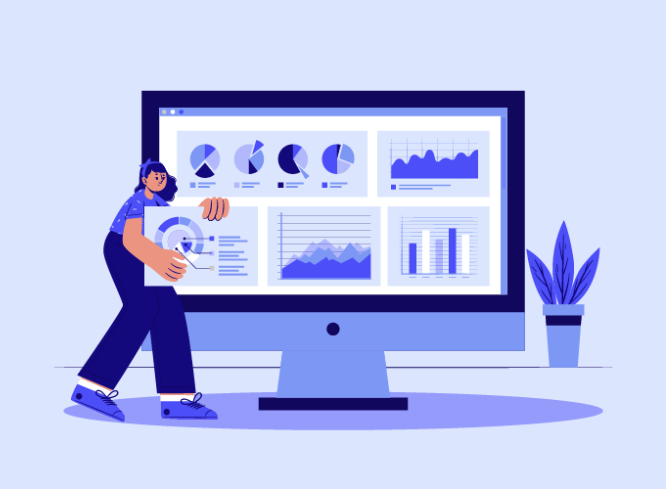Thinking About BI Dashboard? Here’s what you need to know
Business intelligence (BI) dashboards are like CT scans for the mind of your commercial enterprise.
When analyzing the human mind for neurological disorders, medical doctors study CT scans and search for apparent abnormalities. BI dashboards can monitor comparable troubles and regions for development in a commercial enterprise which are in any other case non-apparent from searching at anecdotal overall performance statistics.
An even higher analogy for BI dashboards is scientific charts and information for the reason that they consolidate the records right into an unmarried supply of facts for medical doctors to study and make their decisions.
In this article, we cover what BI dashboards are, why they’re useful for corporations to implement, and examples of the numerous kinds of dashboards.
What are Business Intelligence (BI) Dashboards?
Business intelligence dashboards are records control and statistics visualization answers used to research your statistics. Content creators can use interactive factors like filters and moves to mix charts, graphs, and reviews in an unmarried display for photograph overviews. Dashboards are one of the most famous skills of BI structures due to the fact they give without difficulty comprehensible statistics evaluation, can help you personalize which records you need to view, and offer a manner to percentage the effects of your evaluation with others.
Business intelligence or BI dashboards are a compilation of key graphs, diagrams, tables, and additional data visualizations that provide a prominent location for tracking execution metrics. Dashboards can be optimized around a single metric or an organization-wide KPI. The BI Dashboard is intended to be monitored regularly as it provides a snapshot of the current state of the business while also providing past insights into the contribution to the current situation that provides learning opportunities.
BI dashboards, also known as business dashboards or data dashboards, typically include multiple data visualizations that show KPIs related to business users and trends in both operational decision making and strategic planning. Display in combination. These are more interactive than static reports and usually allow users to access and further analyze the underlying data of charts and charts. In some cases, dashboards are designed by members of the BI team. It may also be created by a business analyst or another user of a self-service BI tool.
What are the advantages of BI Dashboards?
The latest BI platform offers many of the same key features, and many of the actual dashboard examples show some or all of them.
- Customizable user interface
- Interactivity
- Ability to acquire data in near real-time
- Access via web browser
- Default template
- Sharing features that facilitate collaboration
All of these features contribute to the goals of the BI dashboard and bring overall benefits to users and organizations.
What is the purpose of a BI Dashboard?
Dashboards are an important part of an organization’s business intelligence strategy. These need to be specially designed and developed to analyze data from key datasets to improve business decisions. Instead of analysts manually compiling spreadsheets, modern BI platforms can access, analyze, view, and share data through web-based dashboards. Powerful automated business intelligence tools allow stakeholders to create dashboards to review, draw conclusions, and take action.
What is the difference between BI Dashboard and BI Report?
Dashboards and reports are important to business intelligence, and dashboards help users understand complex reports. Dashboards are ideal for stakeholders who need a quick overview of performance. The report is intended for stakeholders who need more detailed information and want to analyze the data in detail for insight.
Key differences between dashboards and reports
Dashboards and reports can work together to provide a comprehensive view of trends and insights, but they are different. Dashboards can be updated in near real-time using cloud-based technology. These are usually visual and interactive, allowing users to use the information to create their analyzes. Reports, on the other hand, are static. It provides details, but end users need to extract insights from data aggregation.
Click Here for more information on how ConnectPlans 360 can help.

